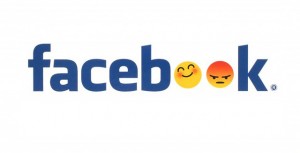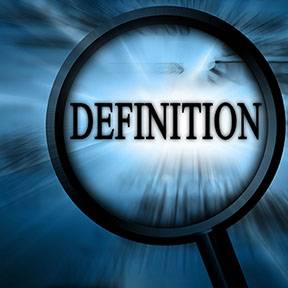The From Line
The world has gone mobile-crazy. (And with the advent of Pokemon Go, the craziness is clearly visible.)
Publishers want to catch them too.
No, not Pokemon. Mobile users. And the weapon of choice has been mobile apps.
How hard could it be? Develop an app, get your readers to download it, and you’ll be enshrined on their homescreens, beckoning them tantalizingly to open and read. Captive audience, anyone?
Except, unfortunately, it doesn’t work that way. Many good publishers have gone that route, and eventually withdrew their mobile apps.
How about you? Should YOUR publishing company build a mobile app? If you can answer yes to the following 5 questions, you may have a shot at success. If not - better to invest the resources in your mobile website.
What’s the best way to get heavy foot traffic to your new cafe in New York City?
a) Rent a property right next to major tourist attractions and build your cafe there
b) Buy a property out of the way of tourist attractions and build your cafe there
(Yes, obviously buying a property next to major tourist attractions would be the best move, but you don’t have that kind of money.)
Here we face the dilemma of the “long short road” and the “short long road.”
Native advertising is a tough nut to crack. It’s not just black and white. While it is one of the fastest growing advertising segments, a lot of publishers are still in the dark when it comes to the wide spectrum of native advertising.
By definition, native advertising is a form of paid media where the ad experience follows the natural form and function of the user experience in which it is placed. Native advertising is NOT content marketing. There’s a big difference. Content marketing is a type of advertising message while native advertising, is a type of distribution.
As the definition of native advertising continues to take form, one thing that remains constant is that native advertising’s success is relegated to publisher standards of quality and experience. Even as advertisers arm themselves with advanced analytics and programmatic buying, the continuous shrinking of display’s performance reveals in some aspects, a negative correlation between advertiser standards and the dwindling engagement they produce. The digital success of native advertising is proof that advertisers must trust that publishers know their audience better than they do when they are in the publisher’s forum. It’s true that advertisers have more of a holistic view of their customer by their ability to collect and analyze data across different channels and sources. However, the publisher is the ringmaster at a particular moment in time with its direct finger on the customer’s pulse. After all, consumers go to publishers to consume content, not ads, right?
Native Advertising Is A Culture
Even as certain aspects of native advertising become programmatic, we should be hopeful that publisher formatting characteristics, the ones that lend themselves to a quality experience, continue to remain in the publisher's control. At the same time, publishers must realize that native advertising is a culture, not a format. It’s a culture that tells an advertiser’s story using the publisher’s core competencies in a way that will resonate best with the publisher’s audience. Therefore, native advertising is the cooperation of a publisher’s editorial, advertising and production departments to create the best possible experience for their consumers. Gone are the days of the siloed church and state mantra between advertising and journalism. Millennials are quite aware that journalistic integrity has been compromised by scandals and editorial bias and they are at peace with advertising’s role – as long as it doesn’t interfere with their experience of content consumption.
Consumer's Insatiable Demand For Experience
The publishers that move with this cultural shift in content consumption could reap unprecedented margins as the market could produce a winner take all phenomenon in their respective media niches. The technologies that once fragmented media could eventually consolidate it as Millennials chase the best possible experience. Those publishers who embrace this shift by perfecting the experiences they create could eventually attract the majority of audience for their niche. Native advertising is a necessary part of that experience. It melds together the objectives of the advertiser with the creativity of the publisher in such a way that advertising is noticeable, entertaining, but most important, easily digested.
How Will Native Advertising Scale?
As the industry wobbles down the native advertising path, the biggest challenge for both publishers and advertisers alike is scale. Publishers are starting to play a pivotal role in helping advertisers produce content that appeals to their audience, but scaling production across hundreds of advertisers is a difficult task. Additionally, as advertisers relinquish their grip on creativity, scaling their audience reach in native formats have been proven futile. Programmatic technologies and industry standards will help both publishers and advertisers to achieve native scale, but only to a point. Native display, sponsored content and other formatting initiatives that contain native elements definitely facilitate scale, however true native advertising is an experience that only the publisher can provide. Culture and creativity are the epicenter of native advertising, characteristics that cannot reside with the advertiser.
As published in MediaPost
Native ads are hot! This controversial yet ultra-effective tactic of blending content, advertisement, and placement is heading straight for consumers' inboxes. With a firm hold on the social channel, native ads are quickly making their way to the email channel where they are a natural fit for mobile newsletter formats. Despite the initial success of native ads, many email publishers are fumbling with their implementation and optimization. Here's some help.
Eye Movement
The successful implementation of native ads in email starts with the format of the email message itself. Email formats are now highly influenced by the success of social media on mobile devices. For example, Facebook made a fairly smooth transition from desktop to mobile, as it was able to scale the value of its social stream to a smaller format. The same challenge for email is achieved via adaptive design, compacting all of an email's content into one narrow column. This one -olumn format significantly increases an email's legibility and engagement, especially on mobile devices, by allowing a subscriber's eye to effortlessly scan from left to right while scrolling.
Native Art
Ideally, all aspects of a native ad's format should be identical to the main content, with the exception of disclosures and labeling. This includes headlines, colors, fonts, image sizes and any other characteristics of the email's native design and format. While some might consider the prior suggestion controversial and even counterintuitive to traditional journalism ethics, others argue that when publishers adopt native ad formats, they send subscribers a message that this content is advertising -- and that their editorial is equally important to their business. After all, you can't have quality content without a solid revenue base to support it. Regardless of your stance, there should be no argument on proper and visible advertising disclosures.
Placement Science
To maximize return on native ads, placement becomes just as critical as format. When using a one-column format, native ad placement in email is easy, yet should be tested extensively while ignoring intuition. An example of letting intuition trump science is not placing a native ad at the top of an email's news stream because an advertisement as a top story goes against the norm. Despite whether this is true or not, publishers who rely on science for placement always fare better then the ones who rely on old-school intuition.
Contextual vs. Personal
Contextual and personal native ads are the two types publishers are currently experimenting with in email. Contextual is easier to implement, as there are fewer targeting and content variables to consider. Personalized content, on the other hand, is much more difficult, since publishers need to be armed with both a deep and diverse ad inventory, as well as with individual targeting capabilities. Unless you are a publisher of a micro-niche subject, it's been proven that personalized native ads mostly outperform contextual ones.
As always, email eventually finds a comfortable role whenever there's a digital media transformation. For now, email is successfully providing extended reach for native ads, while facilitating targeting and testing, resulting in additional publisher revenue.
Elie Ashery is the CEO of Gold Lasso and an adjunct professor at the Robert H. Smith School of Business.





